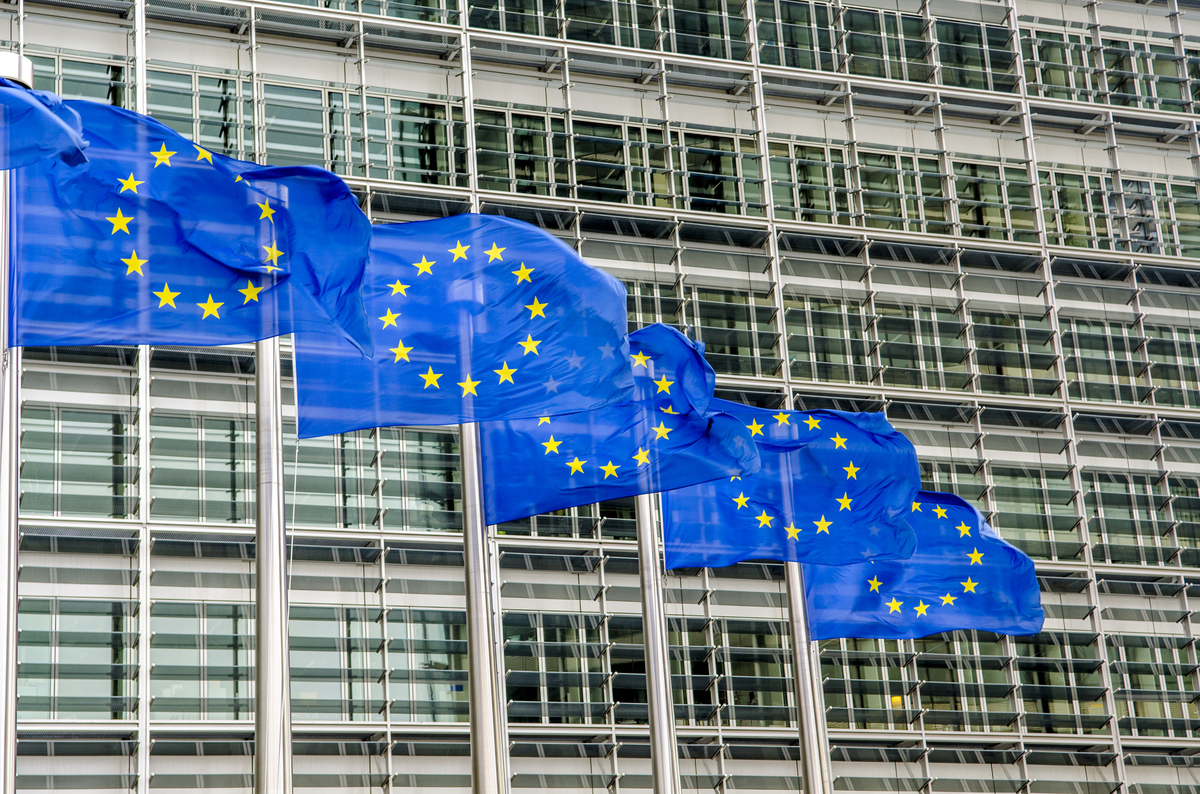Inclusion into EU ETS: Costly affair for shipping – Hecla Emissions
The EU Emissions Trading System (ETS) phase-in period over the next three years could cost the shipping industry a whooping €18 billion ($19 billion), Hecla Emissions Management estimates.
 PHOTO: EU flags outside the European Commission Building in Brussels, Belgium. Getty Images
PHOTO: EU flags outside the European Commission Building in Brussels, Belgium. Getty Images
The European Union’s Monitoring, Reporting and Verification (EU MRV) regulation requires “all ships exceeding 5,000 gross tons to collect and report data on CO2 emissions released to and from EU and European Economic Area (EEA) ports.” It will serve as the basis for the shipping industry’s inclusion in the ETS from 1 January 2024.
Total ETS-applicable emissions for the shipping industry amount to 83.4 million mt of CO2 equivalent (tCO2e) in 2022 – decreasing marginally by 0.22% from 2021, according to the EU MRV’s recently published dataset for the shipping industry’s European CO2 emissions for 2022. Based on the current market value of €90 (almost $100) per emissions allowance (EUA), this would have a total cost of €7.5 billion ($8 billion) for the year.
Hecla Emissions, a partnership between ship manager Wilhelmsen Ship Management (WSM) and shipbroker Affinity Shipping, calculated the ETS cost for the shipping industry by considering the 2022 data and three-year phase-in period of the ETS - 40% of emissions in 2024, 70% in 2025 and 100% in 2026.
This will result in the shipping industry being liable for €3.1 billion ($3.4 billion) in 2024, €5.7 billion ($6.2 billion) in 2025 and €8.4 billion ($9 billion) in 2026, Hecla Emissions projects.
“The projected liabilities emphasize the importance of shipping companies preparing for their entry into the ETS,” Hecla Emissions’ director Hugo Wilson says.
Interesting patterns in emissions data
The data also revealed that emissions have been decreasing across multiple segments, namely tankers, container ships, general cargo ships, reefers, RoRo ships and chemical tankers. The containerships segment showed a decline of 8.95% on the year, which equates to 2.3 million mt of tCO2e saved.
On the other hand, passenger ships and LNG carriers exhibited a massive year-on-year rise of 118% or equating to 2.8 million of tCO2e emissions. But Hecla Emissions is of the opinion that these changes are “less reflective of improved environmental operations as they are of altered European trade patterns.”
To put it in context, the containership segment had a staggering 2021 compared with “a noticeably cooler market in 2022,” which resulted in lesser emissions in 2022.
Meanwhile, the LNG carriers witnessed “a dramatic trading shift away from Asia towards Europe,” partly due to the expansion of Europe's LNG import capacity as the continent works to reduce its dependence on Russian gas following its invasion of Ukraine. This required significantly more LNG to be imported via sea, which resulted in a staggering increase in emissions from LNG carriers.
By Tuhin Roy
Please get in touch with comments or additional info to news@engine.online






